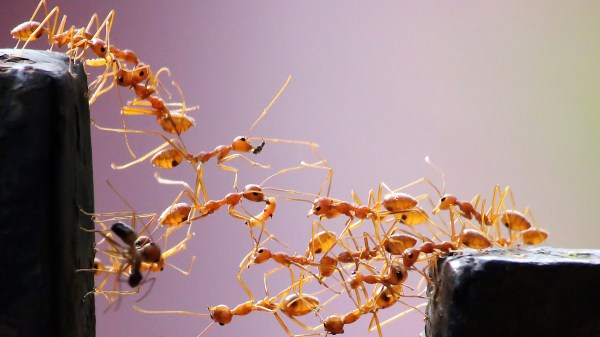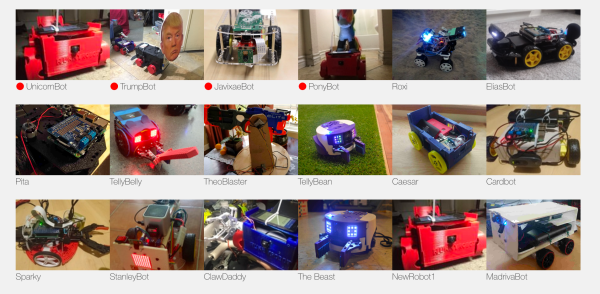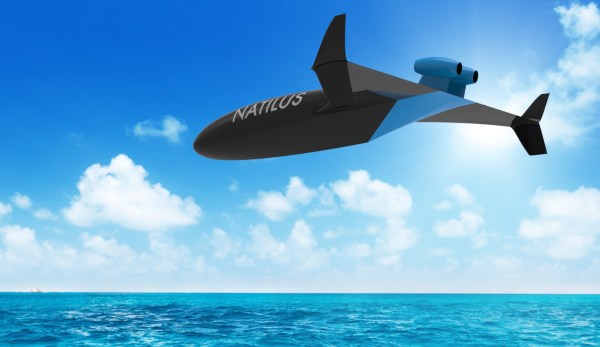Humans and insects think on a different scale, but entomologists study the behavior of these little organisms, so they’re not a complete mystery. There isn’t much intelligence in a single ant or a cubic millimeter of gray matter, but when they all start acting together, you get something greater than the sum of the parts. It is easy to fall into the trap of putting all the intelligence or programming into a single box since that’s how we function. Comparatively, itty-bitty brains, like microcontrollers and single-board computers are inexpensive and plentiful. Enter swarm mentality, and new tasks become possible.
[Kevin Hartnett] talks about a paper researching the simple rules which govern army ants who use their bodies as bridges when confronted with a gap in their path. Anyone with a ruler and a map can decide the shortest route between two places, but army ants perform this optimization from the ground, real-time, and with only a few neurons at their disposal. Two simple rules control bridge building behavior, and that might leave some space in the memory banks of some swarm robots.
A simpler example of swarm mentality could be robots which drive forward anytime they sense infrared waves from above. In this way, anyone watching the swarm could observe when an infrared light was present and where it was directed. You could do the same with inexpensive solar-powered toy cars, but we can already see visible light.
We’re not saying ants should be recruited to control robots, but we’re not objecting to the humane treatment of cyborg bugs either. We’ve been looking into swarm robots for a long time.
Thanks for the tip, [JRD].

















